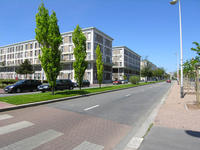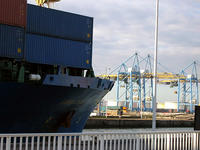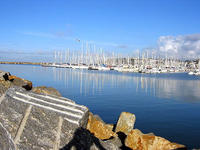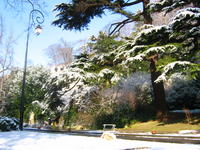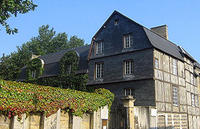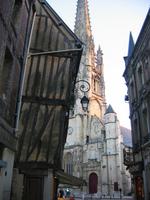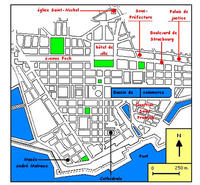You are in: Europe -> France -> Le Havre, the City R... , and traditional search or Image Gallery will yield results of this site only
Le Havre, the City Rebuilt by Auguste Perret
| Site number: | 1181 |
|
| Type of site: | Cultural | |
| Date: | 1945-1964 | |
| Date of Inscription: | 2005 | |
| Location: | Europe, France, Region of Haute-Normandie, Seine-Maritime Département | |
Up to 75 images are shown here. Click on each for more details or on Image Gallery for more images.
Six official UN languages:
Arabic,
Chinese,
English,
French,
Russian,
Spanish
Other languages: Afrikaans, Catalan, Danish, Dutch, Esperanto, Finnish, German, Italian, Japanese, Latvian, Norwegian-bokmål, Norwegian-nynorsk, Polish, Romanian, Serbian, Slovenian, Turkish
Other languages: Afrikaans, Catalan, Danish, Dutch, Esperanto, Finnish, German, Italian, Japanese, Latvian, Norwegian-bokmål, Norwegian-nynorsk, Polish, Romanian, Serbian, Slovenian, Turkish
| Description: | During the Second World War, the Normandy city of Le Havre located on the English Channel, was severely bombed. Auguste Perret created a plan and led a team in the rebuilding of the destroyed area from 1945 to 1964. The inscribed site outlines Le Havre’s administrative, commercial and cultural centre. One of a number of reconstructed cities, Le Havre is incomparable for its absolute unity and integrity. The city fuses a suggestion of the town’s earlier pattern and existing historic structures with new town planning ideas and construction technology. An exceptional post-war example of urban planning and architecture derived from the unity of methodology and the application of prefabrication, the orderly employment of a modular grid, and the inventive utilization of the potential of concrete. --WHMNet paraphrase from the description at WHC Site, where additional information is available. | |
| Le Havre is a city in the northwest region of France situated on the right bank of the mouth of the Seine River. It is a commune in the Seine-Maritime department and the Haute-Normandie region. The inhabitants of the city are called Havrais or Havraises. It is the most populous commune in the Haute-Normandie region and the largest sub-prefecture in France. It is also the bishop's see. Le Havre is also used in the sense of "port". The city was first called Franciscopolis, in homage to King François I, who took the initiative to construct the city, in addition to Le Havre (or Le Hable) de Grâce, the latter term being derived from the chapel Notre-Dame-de-Grâce, which existed on the site before the city's founding. The city was also dubbed the Porte Océane, or Ocean Port. Architecturally, this image has been revived through the "door" that forms the frame at either end of Fochs Avenue, which comes out of the sea. In population, Le Havre ranks second of the French ports, first of the cities in Normandy, and ranks second in the metro areas of Haute-Normandie. Le Havre was honored with the Legion of Honor award on July 18, 1949. UNESCO declared the city center of Le Havre a World Heritage Site on July 15, 2005, in honoring the innovative utilization of concrete's potential.The 133-hectare space that represents, according to UNESCO, "an exceptional example of architecture and town planning of the post-war era," is one of the rare contemporary World Heritage Sites in Europe. --Wikipedia. Text is available under the Creative Commons Attribution-ShareAlike License. | ||
| Source: | http://whc.unesco.org/en/list/1181 | |
| Reference: | 1. UNESCO World Heritage Center, Site Page. | |







